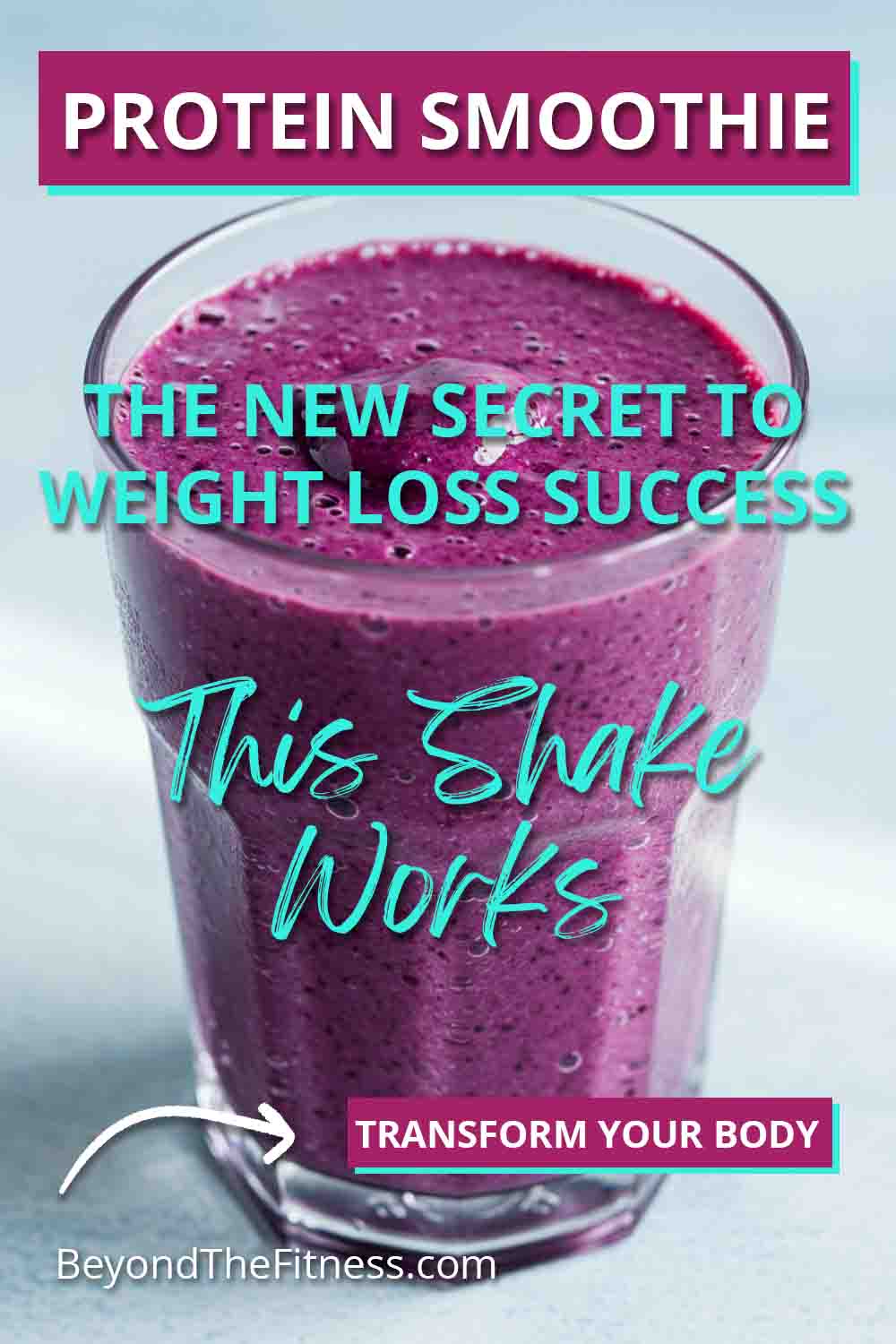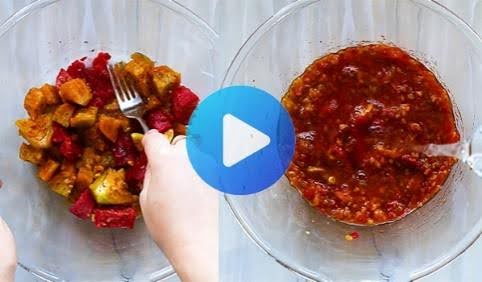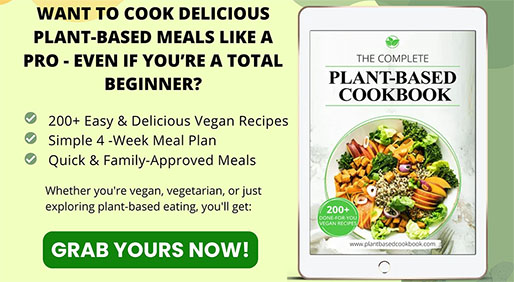Have you heard the buzz? It seems like everywhere you look, someone is sipping on a thick, colorful drink and calling it their secret weapon for shedding pounds. Protein smoothies are super popular right now, especially in the fitness and weight loss worlds. People talk about them like they are magic potions for melting fat and building muscle. But is that really true? Can a simple blended drink be the key to finally reaching your weight loss goals? As someone who works with people trying to get healthier and lose weight, I hear this question a lot. Let’s dive in together and figure out if protein smoothies live up to the hype. We will look at what protein does, how smoothies fit in, and whether they are truly a helpful tool or just another trend.
Understanding Protein Power
Before we talk about smoothies, let’s talk about protein itself. What is it, and why does everyone in fitness seem so obsessed with it?
Think of protein as the main building block for your body. It’s like the bricks used to build a house. Your muscles, organs, skin, hair, and even parts of your immune system are all made mostly of protein. Your body needs it to grow, repair itself, and work properly every single day.
When you exercise, especially when you lift weights or do activities that challenge your muscles, you create tiny little tears in those muscle fibers. Protein is what your body uses to patch up those tears and build the muscle back even stronger. That’s why athletes and people trying to get toned often focus on getting enough protein.
But protein isn’t just for bodybuilders. It’s essential for everyone, especially if you are trying to manage your weight. It plays a few key roles that can really help on a weight loss journey.
How Protein Helps You Lose Weight
So, how exactly does eating protein help you lose weight? It works in a few clever ways.
- It Keeps You Feeling Full: Have you ever noticed that you feel satisfied for longer after eating chicken breast or a bowl of beans compared to, say, a bag of chips? That’s protein working its magic. Protein is digested more slowly than carbohydrates or fats. This slow digestion helps you feel full and satisfied for a longer period after eating. When you feel full, you are less likely to reach for extra snacks or overeat at your next meal. This can naturally help you reduce the total number of calories you eat throughout the day, which is the most important factor for weight loss. Think of it like a natural appetite controller.
- It Burns More Calories During Digestion: This sounds a bit weird, but your body actually uses energy (burns calories) just to digest the food you eat. This is called the Thermic Effect of Food, or TEF for short. Different types of food require different amounts of energy to be digested. Protein has the highest TEF compared to fats and carbohydrates. This means your body burns more calories breaking down protein than it does breaking down other nutrients. While it’s not a huge number of extra calories burned, every little bit helps when you’re trying to create a calorie deficit for weight loss. It’s like getting a tiny metabolic boost just from eating.
- It Helps Protect Your Muscles: When you lose weight, you want to lose fat, not muscle. Muscle is important because it’s metabolically active, meaning it burns calories even when you are resting. If you lose muscle along with fat, your metabolism can slow down, making it harder to keep losing weight and easier to gain it back later. Eating enough protein while you are in a calorie deficit helps tell your body to preserve your precious muscle mass and focus on burning fat for energy instead. This helps keep your metabolism running as efficiently as possible.
So, protein is pretty important for feeling full, getting a small metabolic boost, and keeping your muscles strong while you lose fat.
What Exactly Is a Protein Smoothie?
Now, let’s connect protein to smoothies. A protein smoothie is basically a blended drink that has protein powder added to it. The other ingredients can vary a lot, but typically include:
- A Liquid Base: This could be water, milk (dairy or plant-based like almond, soy, or oat milk), or sometimes coconut water.
- Protein Powder: This is the star ingredient, providing that concentrated dose of protein. We’ll talk more about types later.
- Fruits: Often added for flavor, sweetness, and vitamins. Berries, bananas, mangoes, and pineapple are common choices.
- Vegetables: Sometimes added for extra nutrients and fiber. Spinach and kale are popular because their flavor is easily hidden. Avocado might be added for creaminess and healthy fats.
- Healthy Fats: Things like chia seeds, flax seeds, nut butters, or avocado can be added for richness, satiety, and nutritional benefits.
- Flavor Boosters: Cinnamon, vanilla extract, unsweetened cocoa powder, or mint can add taste without adding sugar.
- Ice: To make it cold and thick.
You blend all these ingredients together until smooth, and voilà – you have a protein smoothie.
Why Choose a Smoothie for Your Protein?
Why not just eat chicken or eggs? Why put protein in a smoothie? There are several reasons why protein smoothies have become so popular.
- Convenience: Let’s be honest, life gets busy. Making a smoothie is often much faster than cooking a full meal. You just toss everything in a blender, whiz it up, and you have a portable meal or snack ready in minutes. This is a huge plus for busy mornings, quick lunches, or post-workout fuel when you don’t have much time.
- Easy Protein Boost: Sometimes it’s hard to meet your protein goals through whole foods alone, especially if you have higher needs due to exercise or if you follow a plant-based diet. Protein powder offers a concentrated source, and adding a scoop or two to a smoothie is an easy way to significantly increase your protein intake without having to eat large amounts of meat, beans, or tofu.
- Nutrient Delivery: Smoothies are a fantastic vehicle for packing in lots of good stuff. Besides protein, you can easily add fruits for vitamins and antioxidants, vegetables for fiber and minerals, and healthy fats for satiety and overall health. It’s a great way to sneak in nutrients you might otherwise miss, especially greens like spinach.
- Taste and Customization: Protein smoothies can be delicious. You can customize them endlessly to suit your taste preferences and prevent boredom. Craving chocolate? Add cocoa powder. Want something fruity? Load up on berries. Need it creamier? A bit of avocado or banana works wonders. This variety can make sticking to a healthy eating plan much more enjoyable.
- Post-Workout Recovery: After exercising, your muscles are ready to soak up nutrients for repair. A protein smoothie is digested relatively quickly compared to a solid meal, meaning the protein and carbohydrates (if included) can get to your muscles faster to start the recovery process.
Are Smoothies Really a Weight Loss Secret Weapon?
Okay, let’s get to the core question. Can protein smoothies actually help you lose weight successfully? The answer is yes, they can be a very helpful tool, but they aren’t magic, and they come with some important warnings.
The Pros: How They Can Help
You Might Be Interested In: Learning more about The Complete Smoothie Detox & Weight Loss Program
- Calorie Control (If Done Right): When you make your own smoothie, you control exactly what goes in. This makes it easier to manage your calorie intake compared to grabbing a pastry or eating a large, complex meal where calories can be hidden. You can measure your ingredients and know precisely how many calories and how much protein you’re consuming.
- Meal Replacement: A well-balanced protein smoothie can potentially replace a meal, especially one that might otherwise be less healthy or higher in calories (like a fast-food lunch or a sugary breakfast cereal). Replacing a 600-calorie lunch with a 400-calorie nutrient-dense smoothie creates a calorie deficit, which is necessary for weight loss.
- Reduced Snacking: Because protein helps you feel full, having a protein smoothie as a meal or a substantial snack can curb your appetite and prevent you from reaching for less healthy, high-calorie snacks between meals.
- Boosting Nutrient Intake: As mentioned, you can load smoothies with fruits, vegetables, seeds, and protein, making them a nutrient-dense option that supports overall health while you’re losing weight. Getting adequate vitamins and minerals is crucial when you’re eating fewer calories.
The Cons: Potential Pitfalls to Avoid
This is where things can go wrong. A smoothie is only as healthy as the ingredients you put into it. It’s incredibly easy to turn a potentially healthy drink into a high-calorie, high-sugar dessert in disguise.
- The Calorie Bomb: This is the biggest danger. While you can control calories, it’s also easy to overdo it. Adding large amounts of fruit (especially high-sugar ones like bananas and mangoes), fruit juices, sweetened yogurts, honey or maple syrup, generous scoops of nut butter, coconut milk, or granola can quickly push the calorie count way up, sometimes exceeding that of a regular meal or even a burger and fries. If your smoothie has more calories than you burn, it will lead to weight gain, not loss.
- The Sugar Trap: Many people load their smoothies with fruit for flavor, but too much fruit, especially blended, can mean a lot of sugar hitting your system quickly. Using fruit juices as a base instead of water or unsweetened milk adds even more sugar without much fiber. Store-bought smoothies are often loaded with added sugars or syrups. This sugar spike can lead to an energy crash later and doesn’t keep you full for long.
- Not Enough Fiber: While you can add fiber sources, if your smoothie is mostly protein powder, liquid, and maybe some juice, it might lack the fiber found in whole foods. Fiber is crucial for digestion and feeling full. Blending also breaks down some of the fiber structure found in whole fruits and vegetables. A low-fiber smoothie might leave you feeling hungry again sooner than a meal with whole ingredients.
- Missing Out on Whole Foods: Relying too heavily on smoothies, even healthy ones, might mean you miss out on the benefits and variety of eating whole foods. Chewing your food also plays a role in signaling fullness to your brain. A balanced diet includes a wide range of textures and nutrients that you might not get if you’re drinking multiple meals a day. Smoothies should supplement, not completely replace, a diet rich in whole vegetables, fruits, lean proteins, and whole grains.
- Digestive Discomfort: Some people find that certain protein powders (like whey concentrate if they are lactose sensitive) or large amounts of fiber added quickly can cause bloating, gas, or stomach upset.
So, while protein smoothies can be a great tool, they require mindfulness. You need to pay attention to what you’re putting in them to make sure they align with your weight loss goals.
Building a Better Smoothie for Weight Loss
If you want to use protein smoothies to help your weight loss efforts, you need to build them smartly. Here’s how to make a smoothie that works for you, not against you:
- Pick Your Protein Wisely: There are many types of protein powder.
- Whey: Popular, digests quickly, great post-workout. Comes in concentrate (more lactose/fat), isolate (less lactose/fat, more protein), and hydrolysate (pre-digested, fastest absorption). Isolate is often a good choice for weight loss.
- Casein: Digests slowly, often taken before bed to provide a steady release of protein overnight. Helps with fullness.
- Plant-Based: Good options for vegans, vegetarians, or those with dairy sensitivities. Examples include soy, pea, rice, hemp, or blends. Check protein content and amino acid profile (blends often provide a more complete profile).
- Key Tip: Always check the nutrition label for added sugars or artificial sweeteners. Choose powders with minimal added ingredients. Look for around 20-30 grams of protein per serving.
- Choose a Low-Calorie Liquid: Stick with water, unsweetened almond milk, unsweetened soy milk, unsweetened oat milk, or maybe unsweetened green tea. Avoid fruit juices, sweetened milks, or full-fat dairy milk if calorie control is your main goal. Start with about 1 cup (8 ounces) and add more if needed to reach desired consistency.
- Go Easy on the Fruit: Fruit adds vitamins, fiber, and natural sweetness, but also sugar and calories.
- Best Choices: Berries (strawberries, blueberries, raspberries) are lower in sugar and high in antioxidants and fiber. Use about 1/2 to 1 cup of frozen berries (frozen makes the smoothie thicker and colder).
- Use in Moderation: Fruits like bananas, mangoes, pineapple, and grapes are higher in sugar. If you use them, stick to a small portion, like 1/2 a small banana.
- Avoid: Canned fruits in syrup or relying solely on fruit juice.
- Load Up on Veggies: This is a great way to add volume, fiber, and nutrients without many calories or much sugar.
- Good Options: A large handful of spinach or kale blends in almost invisibly. Frozen zucchini or cauliflower florets add creaminess without affecting the taste much. Cucumber adds hydration.
- Add Healthy Fats (Carefully): Healthy fats help you feel full and are important for hormone health, but they are calorie-dense. Measure them.
- Good Options: 1 tablespoon of chia seeds or flax seeds (also add fiber), 1/4 of an avocado, or 1 tablespoon of natural nut butter (like almond or peanut butter – check for no added sugar).
- Boost Fiber Further (Optional): If you want extra staying power, add a tablespoon of psyllium husk or some plain rolled oats (uncooked). Make sure to drink enough water throughout the day if you add extra fiber.
- Flavor Without Sugar: Use spices like cinnamon or nutmeg, a splash of vanilla or almond extract, or a tablespoon of unsweetened cocoa powder for a chocolatey taste. A sprig of fresh mint can also be refreshing. Avoid honey, maple syrup, agave, or table sugar.
- Watch Portion Sizes: Even with healthy ingredients, the total amount matters. Use measuring cups and spoons, at least initially, to get a sense of portion sizes and total calories. Aim for a smoothie that fits within your daily calorie goals (e.g., 300-450 calories if replacing a meal, less if it’s a snack).
Special Considerations for Women
While the basics of protein and weight loss apply to everyone, women sometimes have unique considerations.
- Hormonal Balance: Nutrition plays a big role in hormone health. While protein is important, ensure your overall diet is balanced with enough healthy fats (important for hormone production) and complex carbohydrates for energy and fiber. Extreme low-calorie or low-nutrient diets can negatively impact hormonal balance. Smoothies can fit into a balanced plan, but shouldn’t be the only thing you consume.
- Bone Health: Women are at higher risk for osteoporosis later in life. Ensure you’re getting enough calcium and vitamin D. You can boost the calcium in your smoothie by using fortified plant milk or adding plain Greek yogurt (which also adds protein) if dairy works for you. Leafy greens like kale also contain some calcium.
- Iron Needs: Some women, particularly pre-menopausal women, may need more iron. While red meat is a primary source, you can add iron-rich spinach to your smoothies. Pairing it with vitamin C (like from berries) helps your body absorb the iron better.
- Fitting it In: For busy women juggling work, family, and other commitments, the convenience factor of smoothies can be a lifesaver for getting in good nutrition when time is short.
Smoothies Are Just One Piece of the Puzzle
It’s really important to remember that protein smoothies are not a magic bullet. They can be a helpful part of a weight loss plan, but they won’t work in isolation. True, sustainable weight loss comes from a combination of factors:
- Overall Diet Quality: Focus on eating a balanced diet rich in whole, unprocessed foods most of the time. Lots of vegetables, fruits, lean proteins (from various sources, not just powder), whole grains, and healthy fats. A smoothie can supplement this, but it can’t replace the benefits of a consistently healthy eating pattern.
- Calorie Deficit: The fundamental rule of weight loss is consuming fewer calories than your body burns. A well-planned smoothie can help you achieve this deficit by replacing higher-calorie meals or snacks, but you still need to be mindful of your total daily intake from all sources.
- Regular Exercise: Physical activity is crucial. It burns calories, builds metabolism-boosting muscle, improves cardiovascular health, and enhances mood. Aim for a mix of cardio (like walking, running, cycling) and strength training (lifting weights, bodyweight exercises). Protein intake, including from smoothies, supports muscle repair and growth from exercise.
- Adequate Sleep: Poor sleep can mess with hunger hormones (increasing appetite) and make it harder to lose weight. Aim for 7-9 hours of quality sleep per night.
- Stress Management: Chronic stress can also lead to hormonal changes that encourage fat storage, particularly around the belly. Find healthy ways to manage stress, like exercise, meditation, yoga, or spending time in nature.
- Hydration: Drinking enough water is important for metabolism and can also help with feelings of fullness.
- Consistency and Patience: Healthy weight loss takes time and effort. There will be ups and downs. Focus on building sustainable habits rather than looking for quick fixes. Smoothies can be part of those habits, but consistency across all areas is key.
Think of a protein smoothie like a useful tool in your toolbox, like a hammer. A hammer is great for putting nails in, but you can’t build a whole house with just a hammer. You need saws, screwdrivers, and other tools too. Similarly, a protein smoothie can help with protein intake and calorie control, but you need a balanced diet, exercise, sleep, and stress management to build a healthy lifestyle and achieve lasting weight loss.
Related YouTube Video
For some visual ideas and more on smoothies, you might find this video helpful:
Final Thoughts
So, back to our original question: Is a protein smoothie the new secret to weight loss success? My answer is: it can be a helpful contributor, but it’s not the whole secret.
Protein smoothies offer a convenient and often tasty way to boost your protein intake, help manage hunger, and potentially control calories when made thoughtfully. They can be particularly useful after a workout or as a quick meal replacement on busy days.
However, the key is how you make them. They can easily become calorie and sugar traps if you’re not careful with ingredients like fruits, sweeteners, and fats. They should supplement, not replace, a diet based on whole, unprocessed foods.
Ultimately, successful and sustainable weight loss comes down to the bigger picture: consistently eating a balanced, calorie-controlled diet, getting regular exercise, prioritizing sleep, managing stress, and staying hydrated. If a well-planned protein smoothie helps you stick to that bigger picture by keeping you full, providing nutrients, and fitting into your lifestyle, then it can certainly be a valuable tool on your journey. Just don’t expect the smoothie alone to do all the work. Focus on building healthy habits across the board, and you’ll be much more likely to achieve the lasting results you’re looking for.







